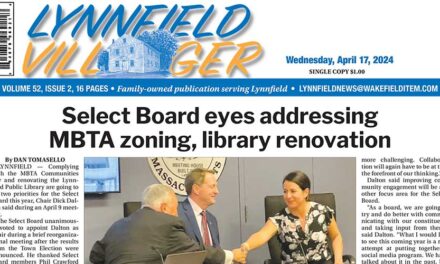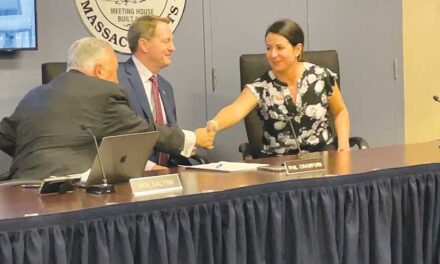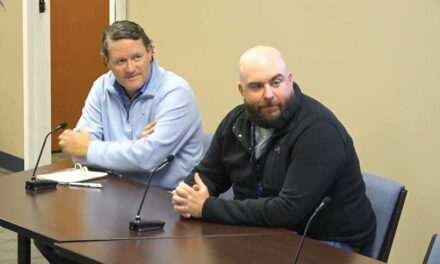Student Services’ Director Keane presents entry plan to SC
Published in the October 10, 2018 edition
By JILLIAN STRING
LYNNFIELD — Director of Student Services Roberta Keane began her presentation to the School Committee at the Sept. 25 meeting with the John C. Maxwell quote: “Change is inevitable. Growth is optional.”
“My start here in Lynnfield, it’s been a whirlwind, but it’s been very welcoming and I really feel like it’s energized me and made me really excited for the work I have ahead,” Keane said.
Prior to her work in Lynnfield, Keane spent the past 16 years working for the Bedford School District in Bedford, New Hampshire in a variety of roles, including Bedford High School Special Education Coordinator and Assistant Director of Special Services.
Keane stated that her entry plan includes six specific goals, however the overarching goal is to become acquainted with the town, families, and overall community.
According to Keane, she seeks to assess the strengths, challenges, and opportunities within the district, build meaningful relationships with all stakeholders, and analyze and utilize the information found in the 2017 Special Education Program Review to strengthen and improve student services.
Other goals include increasing collaboration and strengthening strategies to improve teaching and learning, collaborating with stakeholders in order to prioritize the work ahead, and developing an open and clear implementation plan.
Keane’s plan is broken down into three phases — Phase I: Learning (July-December 2018), Phase II: Analysis and Sharing (January-March 2019), and Phase III: Planning and Implementation (April-September 2019).
“I really focused on instructional leadership because that really is the most important part of my job,” Keane stated. “It is the part that helps make teachers better, and makes the student experience the best that it can possibly be.”
According to Keane, Phase I focuses on the overarching priorities driving all of the work being done across the district, such as professional development, school improvement plans, Understanding by Design, and educator evaluations.
Keane noted that Phase II is when she will compile all of the information from stakeholders in order to plan and prioritize the work ahead, and Phase III will consist of implementing and refining the plan created during Phase II.
School Committee Vice Chairman Rich Sjoberg asked Keane if there was anything specific from the 2017 Special Education Program Review that needed to be addressed in order for the district to successfully complete the Tiered Focused Monitoring process with the Department of Elementary and Secondary Education this school year.
“I don’t recall anything in (the report) specifically around compliance because the Tiered Focused Monitoring is really a look back, so it’s a self-study as far as really selecting files to review, for example an IEP or an initial evaluation, and see (if) all of the pieces of the process (were) followed,” Keane said. “I wouldn’t necessarily need anything from the study done in 2017 to accomplish that.”
School Committee Chairman Jamie Hayman asked Keane about her initial impressions of the district and student services.
“(Predecessor) Kara Mauro left the district and Student Services in really good shape. She is very, and continues to be, very generous with her time in helping me in the transition,” Keane noted. “One of the things that I think strikes me as a strength that I’m going to continue to rely on is the collaborative nature of the district, not just the leadership team, but the staff and the families.”




